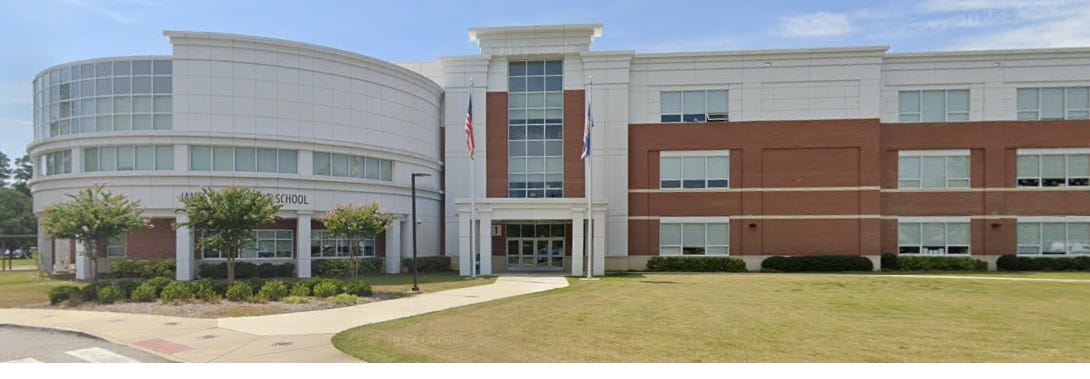Higher electricity prices loom as demand surges
Good morning! Dominion Energy proposes minimum commitments for data centers to cover the cost of getting more power to them, but consumers are also demanding more electricity.

York and James City counties are adopting new rules to regulate data centers and ensure they have enough guaranteed electric power – an issue that has become a statewide concern as power-hungry data centers pop up everywhere.
But we consumers are also demanding more power, and the cost to supply it will mean higher electricity rates, a spokesperson for Dominion Energy told us.
Dominion Energy, facing the fastest growth in electric demand in 75 years, is proposing to set up data centers as a separate customer group and require them to commit to paying for at least 14 years of electricity, whether they use it or not, the spokesperson said.
The plan, which the State Corporation Commission must approve later this year, is to make sure data centers pay their fair share of what it will cost to supply them without impacting consumer rates.
Virginia is the largest data center market in the world, and these centers have doubled their demand for electricity over the past five years, Dominion’s Aaron F. Ruby told us. He said Dominion expects data center demand to quadruple over the next 15 years until data centers account for 25% of Dominion’s energy use, as artificial intelligence raises demand for more computing power.
Dominion’s proposal would require data centers to commit to paying for a certain amount of electricity — even if they shut operations or never build out to capacity — to cover the cost of expanding electric generation to them.
Data centers not only consume considerable electricity, but also make demands on water and generate considerable noise, prompting local leaders to design ordinances to control them. Residents in Chesapeake and Louisa county recently protested plans to locate data centers there.
Besides noise, data centers also generate significant tax revenues for localities, thus they have a financial interest in finding ways to make them better neighbors.
The state’s Joint Legislative Audit and Review Commission (JLARC) completed a review of data centers last year and found they are not causing consumer utility prices to increase -- yet. But JLARC recommended utilities take steps to make sure the data centers pay for the cost of creating extra electricity they will need in coming years.
Virginia consumers have also been ramping up their demand for electricity as they switch from natural gas appliances and heaters, the Dominion spokesperson said. The utility expects consumer demand to double in 15 years, so the utility will have to generate twice as much power and reliably deliver it.
That will require building more power generation stations and expanding the grid, the cost of which will show up in higher consumer rates.
The average household’s electricity bill will go up by $8 next January, and another $2 the following year.
Dominion said that the cost of poles, wiring, cables and other components involved in generating and delivery electricity continue to rise.
Splitting WJCC schools would cost taxpayers millions of dollars
Political drama aside, Williamsburg and James City County leaders have strong financial and political incentives to keep their joint school system.
Like human divorces, a breakup of the Williamsburg-James City County school division would cost taxpayers of each locality millions of dollars.
That’s not factoring in the hassles of redistricting students, rehiring and allocating staff, and setting up duplicate technology, administration and control systems.
James City County served notice in July 2023 it planned to terminate the agreement, after the board of supervisors learned Williamsburg had commissioned a study to see if going on its own would better serve city students.
The study showed that while the city provides only 10% of the school system’s 11,400 students, test results for minority and poor students in the city lagged those of their peers from the county.
But the study also found Williamsburg’s cost for running an independent school system would increase per-pupil spending by 15%, at a time voters are already pushing back against government spending.
James City County commissioned its own study, which found the county would probably have to spend $105 million build a new middle school to house students displaced from the two middle schools that would remain with Williamsburg.
In the event of a breakup, the city would keep three schools within its borders – Matthew Whaley Elementary, Berkeley Middle and James Blair Middle.
James City County would keep the eight elementary schools, two middle schools and three high schools within its borders.
Spending more than $100 million on a new school could create other issues for the county.
The county’s financial advisor, Davenport & Company, told supervisors during a February retreat that adding more borrowing to the $260 million planned for projects that include the new government center and library “could negatively impact the county’s credit ratings.”
County Finance Director Sharon McCarthy told us that the Davenport discussion did not consider the impact of a school divorce.
“There are many variables and scenarios that would require a deeper dive should we split, and that analysis would include capital and operating impacts,” she said. “For capital purposes, among other things, this would entail determining if we can modify existing facilities, if we should redistrict, if we need new facilities, etc.”
One of the major issues between the two localities is their respective financial contributions to the school system. State and local money account for the bulk of school budgets, supplemented by a host of federal programs and even Medicaid payments when school nurses treat students who are Medicaid recipients.
How much each locality gets from the state is based upon a complicated formula called the Local Composite Index, which includes the value of real estate, adjusted gross income and taxable retail sales as well as school population. Once the data is calculated, the local government pays 45% of school costs and the state pays 55%.
James City County’s LCI is .54 percent, but county officials say the county’s $100 million contribution to schools is 86% higher than the formula requires. Williamsburg’s LCI is .74, and county officials say the city is not paying what it should.
State & Regional Headlines
HII CEO says wage increases are beginning to ease the labor shortage at Newport News
Is it time for Virginia to stop holding elections every year? Lawmakers are taking a serious look
Passings
Carl Robert Geiling, 68, July 28.
William Gregory “Greg” Ewald, 58, July 30.
Patsy Jane Bragg, 93, July 25.





In regards to Dominion Power, A few years back residents in my neighborhood were presented with a solar farm of at least 2,200 panels to be placed behind our homes and was told our electric bills would show a marked difference from other months past usage. That is not the case at all, the bills continue to climb and no satisfaction given when contacting customer service. Why even ask the community their input when the deal is already complete… I guess the lie was just to pacify the residents so they could move on with the installation.